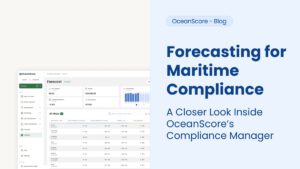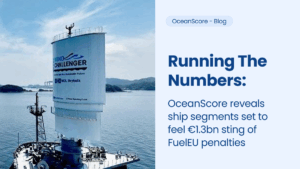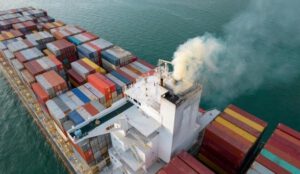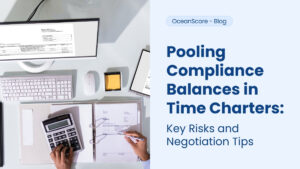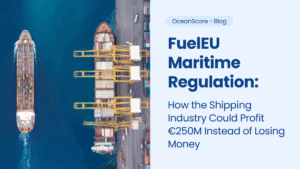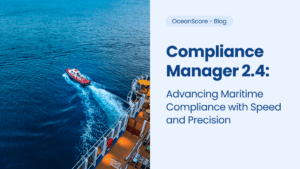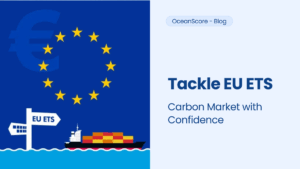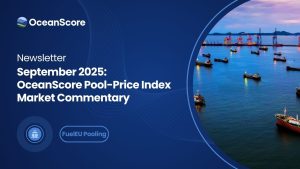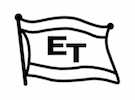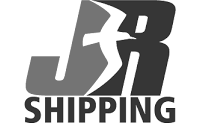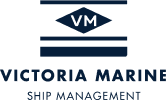The concept of trading is about to take on a whole new meaning for shipping companies with the implementation of the EU Emissions Trading System (EU ETS) for maritime from next year, marking the start of a complex transition to EU ETS compliance. As well as monitoring their emissions to meet reporting requirements, companies must now grapple with the complexities of carbon credit trading to manage and mitigate financial exposure to the EU ETS.
The new regulatory regime will require the ship owner or manager, as Document of Compliance (DoC) holder, to surrender to the authorities so-called EU Allowances (EUAs), or carbon credits, corresponding to fleet emissions based on reported MRV data for the previous year.
This means that shipping companies will have to start purchasing EUAs on an ongoing basis from 1 January 2024 in the run-up to an initial deadline of September 2025 to surrender EUAs. The industry will initially be liable for 40% of emissions in 2024, rising to 70% and 100% of emissions in 2025 and 2026, respectively, under the three-year phase-in of the EU ETS.
All emissions on voyages and port calls within the EU/EEA, and 50% of emissions on voyages into or out of the EU/EEA, will be subject to the EU ETS once fully implemented. It will initially apply to CO2 emissions from cargo and passenger ships over 5000grt, with methane and nitrous oxide emissions to be covered from 2026 and offshore vessels set to be included from 2027.
Exposure to EUA liabilities
The transition to the EU ETS introduces a new layer of risk management for maritime stakeholders, particularly around EUA price volatility and compliance exposure.
There are hefty penalties for non-compliance, with an inflation-linked fine of €100 per tonne of CO2 equivalent for emissions not covered by EUAs, as well as the requirement to make up any shortfall of allowances. There is also the risk of an entire fleet being expelled from trading in EU waters if a company fails to surrender sufficient allowances for a single vessel over two consecutive years or more.
However, there are wider financial implications for shipping companies from the need to buy and sell EUAs as this introduces a new element of balance sheet risk with exposure to potentially huge liabilities, according to Hamburg-based maritime data and technology firm OceanScore.
It is estimated the EU ETS could amount to an additional cost for shipping of anywhere between €8 billion and €10 billion annually once fully implemented in 2026 after a three-year phase-in period, dependent on a fluctuating market price that is currently around €90 for an EUA covering emissions of 1 tonne of CO2 equivalent.
“This can translate into millions of euros in liabilities for the party responsible for buying and surrendering allowances, especially when managing (or owning) a large fleet. It may also be difficult to pass on these costs to the charterer, as the ‘polluter pays’ principle dictates, due to possible disputes over EUA volumes or pricing.” explains OceanScore co-Managing Director Albrecht Grell.
These evolving requirements underline the importance of early preparation for the transition to EU ETS.
Tackling trading complexity
“Therefore, shipping companies need to have administrative systems in place as part of their transition to EU ETS compliance, both to track fleet emissions and continually assess the volume of allowances required, as well as allocate these allowances or the related costs to relevant stakeholders as part of the EUA accounting process. Quality and timely availability of data become crucial, especially in voyage charter environments.”
“Critically, companies will have to determine the best strategy for acquiring EUAs, which will entail complex considerations related to price, volume, timing of EUA transactions and other issues.”
EUAs can be purchased at a fixed price in the primary market through auctions arranged several times a year by the European Energy Exchange (EEX) on behalf of the EU. They can also be bought and sold on the secondary market ‘over the counter’ through brokers or online trading platforms.
While EUAs can be banked for use in future years, there is no risk of the market running dry. Shipping participates in the broader EUA market, contributing only around 5% of total demand.
Moving forward, though, the EU has announced it will reduce the number of available EUAs by 4.3% annually. While many expect this to lead to higher EUA prices, that doesn’t have to be the case, at least in the short term. EUA prices are highly volatile, having swung between €80 and over €100 in 2023 alone after falling to below €60 last year after the outbreak of war in Ukraine.
Finding the right price
Grell points out that achieving the optimal price for EUAs is clearly an important factor, especially if large volumes are being traded, though this is probably less of a priority if allowances are only being acquired for offhires or unemployed vessels, where volumes should be significantly lower.
To determine the best price, it is necessary to establish the difference between the buying and selling price being quoted by the trader – the so-called bid-ask spread – that should not exceed a margin of 0.15% to minimise trading losses, he says.
“The ability to buy and sell EUAs via the same trading platform is essential so the shipping company can dispose of surplus EUAs if, for example, a voyage ended up requiring fewer allowances than expected. This means it can cash in these EUAs or take advantage of price fluctuations by buying when prices are low and selling when they are high.” Grell explains.
“EUAs being a commodity though, buyers should not expect to gain much from shopping around. The markets are transparent and prices will differ only in the cents range. Price differences for EUAs will most certainly be way more significant from week to week than between different traders. Shipping companies should therefore focus on their trading strategy – on the timing of when to buy a certain volume of EUAs.”
The challenge will be “commercial alignment”, as Grell calls it. For a heavy-lift operator, for example, this would require to be clear – when fixing cargo – on when to expect the payment for this cargo and how many EUAs will be required to cover this voyage.
This is where forward trading comes into the picture, or the ability to fix the price of EUAs for delivery at some future date. The heavy-lift operator could buy a forward for the delivery (and payment) of the EUAs needed for a particular voyage just after the date of the expected payment by his customer and then include this EUA forward price in his calculation, effectively hedging himself against the risk of price changes.
Similar forward strategies can be used to cover for redeployments and budgeted periods of unemployment.
A question of quantity
Grell states that quantities of EUAs to be acquired by or on behalf of the owner to cover for offhires and periods of unemployment tend to be small and that it is therefore important to be able trade odd volumes rather than the standard batches of 500 and 1000 allowances. Typically, there should not be a price penalty for these smaller volumes.
This ability to buy non-standard volumes also means the costs of these EUAs can be directly charged by a manager to a third party (owner or even charterer if the charterer provides funds rather than EUAs for his emissions) to avoid unnecessary price disputes, in addition to avoiding the risk of price changes and constrained liquidity if large volumes are saved for later use.
OceanScore is working with long-established trader RWE Supply & Trading to develop the automated solution EUA Trader that is also integrated into its recently launched online application ETS Manager geared to helping shipping companies navigate a path to EU ETS compliance.
OceanScore’s co-Managing Director Rolf Garrn says: “EUA trading for shipping entails added complexity compared with land-based industry as there are multiple stakeholders involved. This demands a differentiated approach as shipping companies make the difficult transition to a new carbon trading regime.”
For more information contact:
Albrecht Grell, co-Managing Director, OceanScore.
Email: albrecht.grell@oceanscore.com
About OceanScore
OceanScore is a Hamburg-based provider of sustainability data and compliance solutions with a strong maritime background. The company offers a range of ESG solutions tailored to the industry’s unique needs.



